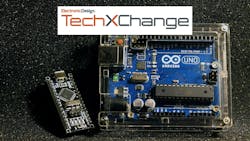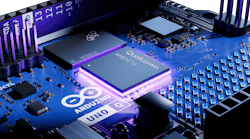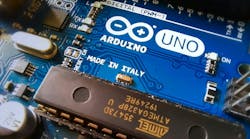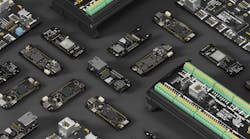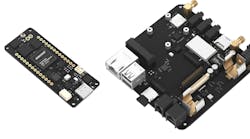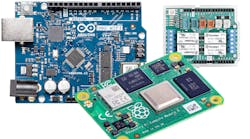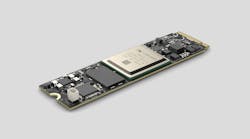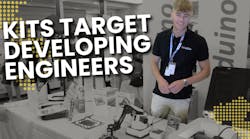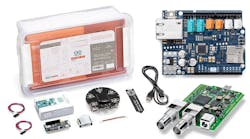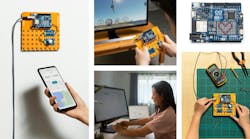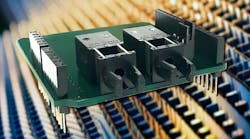Arduino Resources for Professional Developers
Arduino is an open-source hardware and software company that designed one of the most popular single-board microcontrollers (SBMCs) of all time. The Italian company manufactures a variety of different boards and add-ons for any number of applications and development projects.
What is Arduino & Its History
Most Arduino boards are feature-rich and come equipped with digital and analog I/Os, serial communication interfaces, USB ports, and more. Those microcontrollers and feature sets serve to provide a solid foundation for projects that range from industrial automation to rapid prototyping, which are just a few reasons why professional engineers love Arduino.
Decades ago, the term “rapid prototyping” meant turning ideas over to big companies to produce products that could take a better part of a year or longer, along with providing a ton of financial backing. The mid-2000s saw the rise of cheap and widely available hardware in the form of microcontrollers, system-on-modules (SOMs), carrier boards (CBs), system-on-chips (SoCs), and SBMCs, which opened up new worlds for hobbyists, makers, and engineers.
Professional engineers are using the Arduino ecosystem and its Shield add-on boards to showcase new design concepts and bring their designs to life, even in the embedded world. Embedded development projects have become easier through the use of Arduino than they were just 20 years ago.
The ability to add sensors, actuators, and communication modules makes it an ideal choice for embedded systems. Moreover, it's able to plug-and-play and interface to a laptop or PC almost instantly using the Arduino IDE, making the platform a game-changer.
The Arduino IDE is based on the C/C++ programming language, but even professional engineers don’t need a coding degree to take advantage of the software. Experienced developers have written everything from drivers to complete libraries for specific applications that can be modified for use with other hardware and projects. This can be beneficial considering there’s no need to license them for use.
Even after prototyping and moving on to production, Arduino’s open-source approach offers readily available components, schematics, and firmware to help facilitate a faster time-to-market.
The Arduino IDE also simplifies uploading code, which allows for engineers to test their code and flesh out any bugs quickly and efficiently. And it supports different microcontrollers, such as the ESP8266, ESP32, and STM32, in addition to being cross-compatible with several operating systems like Windows, Linux, macOS, Android, and others.
The Arduino IDE is customizable and expandable, enabling engineers to integrate custom libraries or modify existing ones to suit project needs. Thus, it's well-suited for industrial settings where different protocols can come into play.
While it began life as a simple, low-cost tool for creating digital projects by non-engineers, the Arduino platform quickly became a staple for engineers to rapidly prototype projects of all kinds. It’s found uses in industrial automation, smart agriculture, predictive maintenance, data logging, remote monitoring, etc.
Arduino's wealth of libraries, code repositories, online resources, and an extensive community make it easy to see why more professional engineers are turning to Arduino to help bring their ideas to life. It allows them to innovate without breaking the bank, provides faster development cycles, and enables a smooth transition from concept to production.
With Arduino's recent acquisition by Qualcomm, it will be interesting to see where Arduino goes next.
In this TechXChange, Electronic Design explores how Arduino fits into professional developing. If you have any thoughts about what we should cover in the future, please leave a comment or respond to the survey.
Arduino Add-Ons Worth Checking Out
Arduino has more support, add-ons and peripherals dedicated to the platform than anything else. Here is just a small sample of what is possible. More will be added overtime. So, stay tuned.
Read More About Arduino
About the Author
Cabe Atwell
Technology Editor, Electronic Design
Cabe is a Technology Editor for Electronic Design.
Engineer, Machinist, Maker, Writer. A graduate Electrical Engineer actively plying his expertise in the industry and at his company, Gunhead. When not designing/building, he creates a steady torrent of projects and content in the media world. Many of his projects and articles are online at element14 & SolidSmack, industry-focused work at EETimes & EDN, and offbeat articles at Make Magazine. Currently, you can find him hosting webinars and contributing to Electronic Design and Machine Design.
Cabe is an electrical engineer, design consultant and author with 25 years’ experience. His most recent book is “Essential 555 IC: Design, Configure, and Create Clever Circuits”
Cabe writes the Engineering on Friday blog on Electronic Design.
